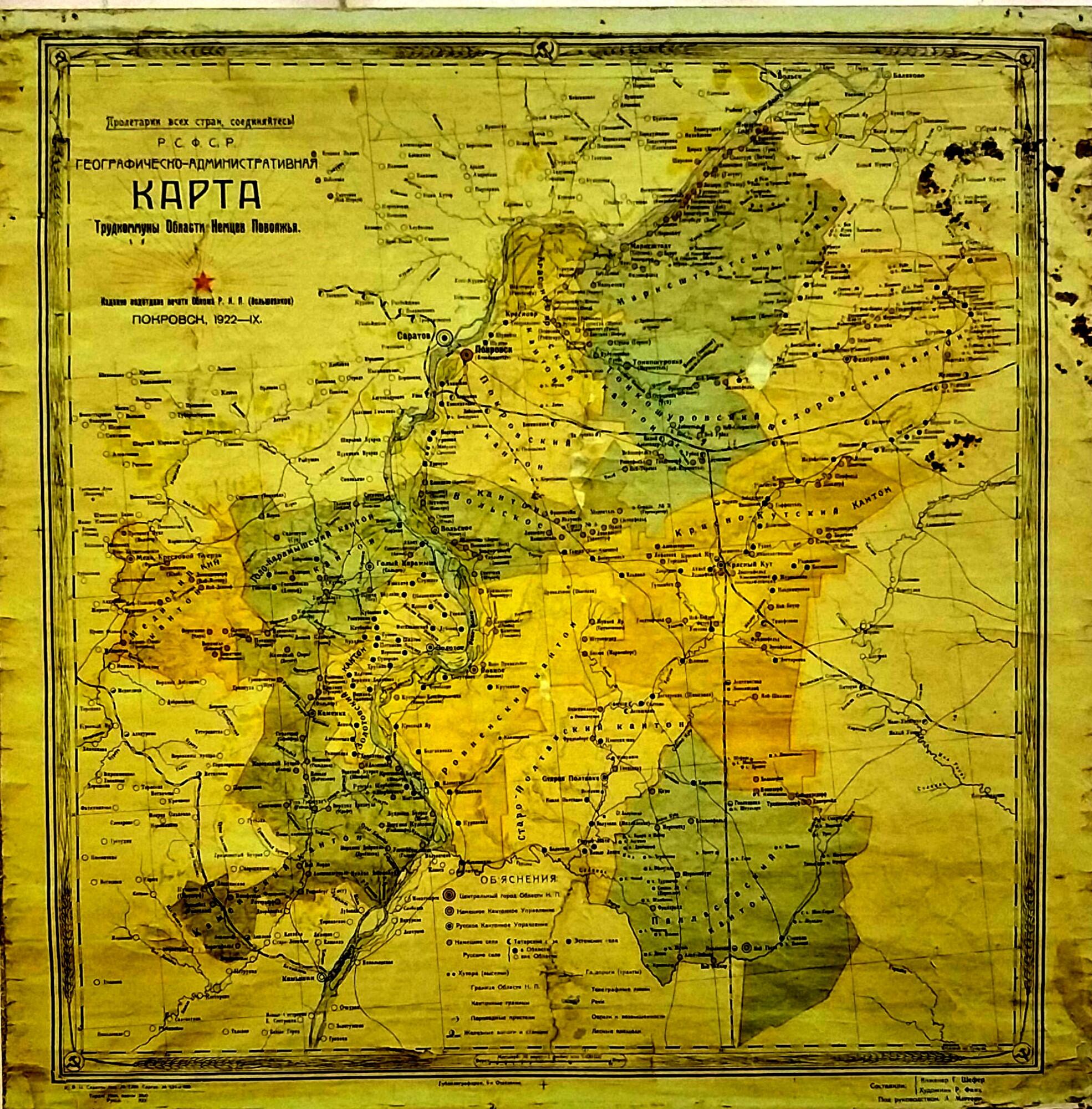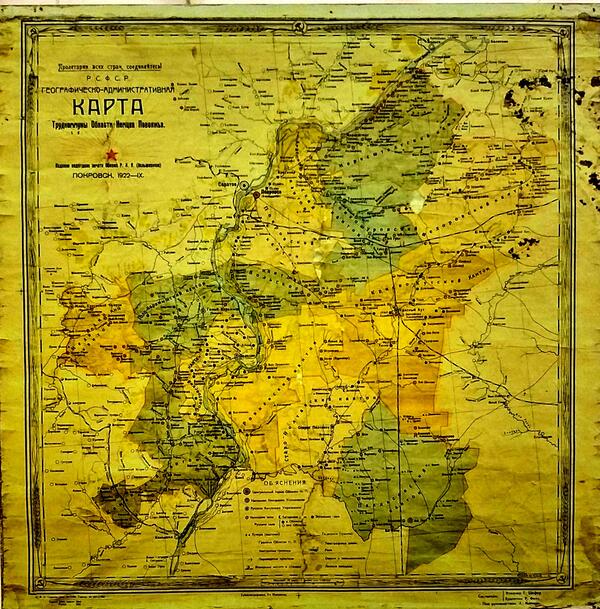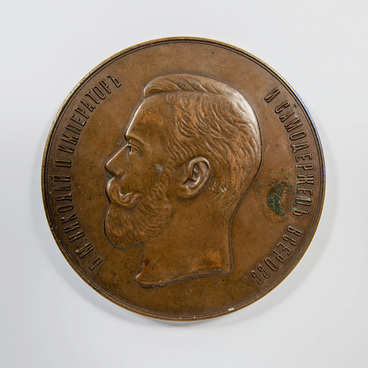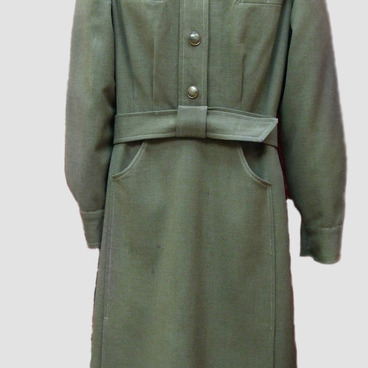You’re now looking at a 1922 geographical and administrative map of the Volga German Workers' Commune It forms part of the museums collection exploring the lives of the Volga German settlers. The collection, which counts over a thousand objects, points to the development of the settlers’ economy and culture, as well as their everyday life and traditions. It builds on the materials from the German section of the Ethnographic Museum, which opened in Saratov in 1920.
Following a decree from Catherine II ‘allowing foreigners to settle on empty land in Russia’, and the following policy, many Germans arrived in the Saratov Volga region. They mainly came from southern Germany. They had to cultivate and acclimatize with the uninhabited Russian territory. They established over 100 settlements in the Volga Region. These included Nizhnyaya and Verkhnyaya Dobrinka, Ust Kulalinka, Katharinenstadt and Sarepta. The settlers were mainly engaged in agriculture. They grew wheat, oil-yielding sunflowers, mustard, tobacco and potatoes. The mustard and balsam produced by the German settlers in Sarepta became world-famous and was exported across the globe. In 1867, Sarepta balsam and mustard received a medal at the Paris International Exposition.
Cheese and butter were also exported from the region. Pig farming became the most popular and profitable branch of livestock farming. In terms of crafts production, straw weaving, winnowing, ceramic cookware and sarpinka cloth were particularly common. One of the largest trading firms in Saratov was ‘A. Bender and Sons. Sarpinka Cloths.’ At the end of the 19th century, Saratov and Katharinenstadt had become Russia’s main centers of flour milling. The most famous flour-milling merchants were the representatives from the Schmidt, Reinach and Borel families.
In 1918, the German settlements were established as one of the Soviet Union’s first autonomous entities. It was called the Volga German Workers' Commune. In 1924 it became an autonomous republic. The Republic lasted until 1941, when, following the Presidium of the Supreme Soviet of the USSR’s decree, all Volga Germans were deported to Siberia, Kazakhstan and the Far East.
Following a decree from Catherine II ‘allowing foreigners to settle on empty land in Russia’, and the following policy, many Germans arrived in the Saratov Volga region. They mainly came from southern Germany. They had to cultivate and acclimatize with the uninhabited Russian territory. They established over 100 settlements in the Volga Region. These included Nizhnyaya and Verkhnyaya Dobrinka, Ust Kulalinka, Katharinenstadt and Sarepta. The settlers were mainly engaged in agriculture. They grew wheat, oil-yielding sunflowers, mustard, tobacco and potatoes. The mustard and balsam produced by the German settlers in Sarepta became world-famous and was exported across the globe. In 1867, Sarepta balsam and mustard received a medal at the Paris International Exposition.
Cheese and butter were also exported from the region. Pig farming became the most popular and profitable branch of livestock farming. In terms of crafts production, straw weaving, winnowing, ceramic cookware and sarpinka cloth were particularly common. One of the largest trading firms in Saratov was ‘A. Bender and Sons. Sarpinka Cloths.’ At the end of the 19th century, Saratov and Katharinenstadt had become Russia’s main centers of flour milling. The most famous flour-milling merchants were the representatives from the Schmidt, Reinach and Borel families.
In 1918, the German settlements were established as one of the Soviet Union’s first autonomous entities. It was called the Volga German Workers' Commune. In 1924 it became an autonomous republic. The Republic lasted until 1941, when, following the Presidium of the Supreme Soviet of the USSR’s decree, all Volga Germans were deported to Siberia, Kazakhstan and the Far East.



